Efficient pumping systems are critical for your wastewater treatment plant to handle large volumes of water and maintain proper treatment at every stage. Using the right pumps ensures smooth operation, lowers the risk of blockages, and keeps you compliant with environmental regulations.
With the global water and wastewater treatment market expected to grow from $346.41 billion in 2024 to $617.81 billion by 2032 at a CAGR of 7.5%, having reliable pumps is more important than ever for municipal, industrial, and commercial facilities.
This guide walks you through wastewater treatment plant pumps selection, covering pump types, key selection factors, and maintenance practices to help you achieve consistent, long-term performance.
Key Takeaways
- Wastewater treatment plant pumps selection is critical for maintaining consistent flow, preventing blockages, and supporting effective treatment processes.
- Choosing the right pumps improves efficiency, reduces downtime, and helps meet environmental and safety standards.
- Evaluate pumps based on flow rate, head, solids handling capacity, chemical compatibility, and energy efficiency.
- Regular preventive maintenance extends pump life and lowers repair costs.
- Understanding different pump types such as centrifugal, submersible, and positive displacement pumps ensures reliable wastewater management.
To understand their significance, it is important to see how pumps handle the movement, treatment, and processing of wastewater reliably.
Understanding Wastewater Treatment Plant Pumps and Their Impact
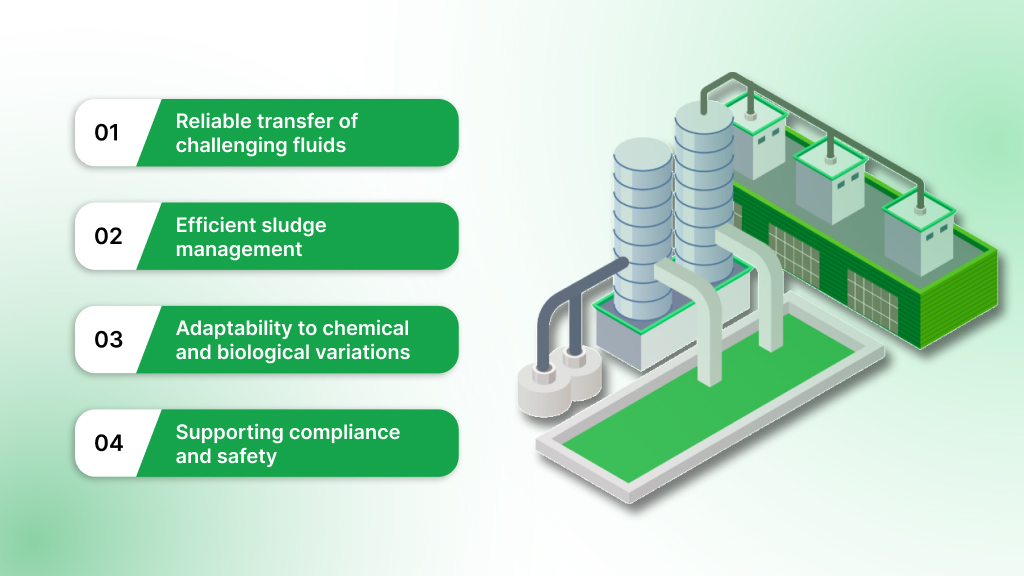
Wastewater treatment plant pumps are mechanical devices designed to move sewage, sludge, and treated effluent through the treatment system.
These pumps use impellers, rotors, or displacement mechanisms to create flow, transporting wastewater across different stages while preventing blockages, reducing wear, and ensuring continuous operation.
Here’s why pumps are vital to every wastewater treatment plant:
- Reliable transfer of challenging fluids: Wastewater often contains solids, fibrous material, and grit, so pumps designed for these conditions ensure continuous and clog-free operation.
- Efficient sludge management: Thickened or dewatered sludge varies in density and viscosity, requiring pumps that can handle heavier fluids without excessive energy use or mechanical failure.
- Adaptability to chemical and biological variations: Wastewater can include aggressive chemicals and biological matter, making corrosion- and abrasion-resistant pumps essential for reliable operation.
- Supporting compliance and safety: Properly selected pumps ensure wastewater reaches treatment and discharge points effectively, reducing the risk of spills, equipment failure, and regulatory violations.
After understanding the importance of pumps, the next step is to know the core technical parameters for selection.
Core Technical Parameters for Wastewater Pump Selection
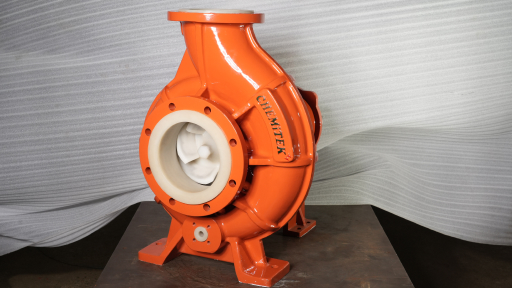
All wastewater treatment plants operate under specific conditions, and pumps must be chosen to meet those exact requirements. Technical parameters serve as the benchmark for comparing pump models and determining suitability for the job.
The following table lists the primary parameters that guide an informed pump selection process:
Before implementing any wastewater system, it is crucial to consider the operational demands and environmental conditions that pumps must withstand.
Wastewater Treatment Plant Pumps Selection Essentials

Wastewater treatment pumps must handle diverse conditions, from varying fluid compositions to fluctuating flow demands, while maintaining smooth operation throughout all stages. Optimal performance depends on matching pump capabilities with process requirements, durability, and operational efficiency.
To ensure optimal performance, the following sections highlight the wastewater treatment plant pumps selection essentials that impact pump operation and system reliability.
1. Assess Fluid Characteristics in Detail
Understanding the wastewater properties is the foundation of pump selection. Different fluid characteristics directly influence pump type, impeller design, material choice, and motor sizing.
Critical Fluid Parameters:
- Viscosity: High-viscosity liquids increase torque demand and reduce flow in centrifugal pumps. Positive displacement pumps are ideal for fluids >500–1000 cP.
- Abrasiveness, Acidity, and Alkalinity: Abrasive solids or extreme pH (<4 or >10) require hardened alloys, protective coatings, or wear-resistant liners.
- Temperature and Vapor Pressure: Standard wastewater: 32–140°F. High temperature fluids may need heat-resistant seals and elastomers. Low vapor pressure fluids require low-NPSH impellers to avoid cavitation.
- Specific Gravity: Denser fluids increase power requirements. Pumps and motors must be rated for higher loads.
- Solid Particle Concentration: High solids content requires vortex, channel, or slurry-handling impellers to prevent clogging and minimize wear.
2. Identify Pump Type Based on Application
The right pump type either metallic or non-metallic is essential to match the wastewater stage and process requirements. Each pump technology is designed to handle specific flow characteristics, fluid properties, and operational conditions.
Pump Selection Criteria:
3. Determine Flow Rate and Total Dynamic Head (TDH)
Accurately calculating flow rate and total dynamic head ensures the pump operates efficiently, avoids overloading, and maintains consistent performance under all plant conditions.
Performance Evaluation Metrics:
- Flow Rate: Determine both continuous and peak flows in GPM or m³/h. Accurate flow calculations ensure the pump can handle normal operations and occasional surges without overworking.
- Total Dynamic Head (TDH): Includes all components of system head such as static lift, friction losses in pipes and fittings, valve restrictions, and downstream backpressure. Proper TDH calculation prevents underperformance or excess energy consumption.
- Safety Margin: Include an additional 10–20% head to account for system changes, pump wear, transient surges, and operational variability.
- Net Positive Suction Head (NPSH): Ensure the available NPSH exceeds the pump’s required NPSH by 10–20% to prevent cavitation, which can cause damage to impellers and reduce pump lifespan.
4. Evaluate Solids Handling Requirements
Wastewater often contains suspended solids that can impact pump performance and lifespan. Understanding solids characteristics ensures the pump can handle them without clogging, excessive wear, or operational interruptions.
Solids Management Considerations:
- Maximum Solid Size: Identify the largest particle in the wastewater. Pumps and impellers should be designed to pass solids typically ranging from 1 to 3 inches for raw sewage without clogging.
- Solids Concentration: Assess the total suspended solids (TSS) in the system. Raw sewage generally contains 2–5% solids, while sludge can have 12–15%, requiring pumps that can handle higher concentrations.
- Impeller Design: Choose impellers that minimize clogging. Options include channel, vortex, or recessed impellers, which allow solids to pass smoothly and reduce maintenance frequency.
- Abrasion Protection: High-grit or abrasive flows can wear down pump components. Use hardened alloys, wear plates, or rubber-lined casings to extend pump life and maintain performance.
5. Consider Material Compatibility
Pump materials must withstand chemical corrosion, abrasion, and thermal stress to ensure long-term reliability and reduce maintenance requirements. Material selection directly impacts pump lifespan, operational efficiency, and suitability for aggressive wastewater environments.
Material Evaluation Guidelines:
- Chemical Resistance: Pumps must tolerate typical wastewater pH (4–10), chlorine, sulfides, and other oxidizing or corrosive compounds without degradation.
- Abrasive Resistance: Fluids containing grit, sand, or suspended solids require durable materials such as stainless steel 316, duplex stainless steel, or rubber-lined cast iron to prevent impeller and casing wear.
- Temperature Tolerance: Standard wastewater pumps operate between 32–140°F. For industrial effluent or hot process streams, pumps must handle temperatures up to 200°F with appropriate seals, bearings, and elastomers.
- Protective Coatings: Sacrificial layers, polymer coatings, or specialized linings enhance resistance to corrosion and abrasion in highly aggressive or chemically challenging wastewater streams.
6. Examine Energy Efficiency
Energy-efficient pumps reduce operational costs, limit environmental impact, and improve overall lifecycle return on investment. Considering energy performance during pump selection ensures both short-term and long-term savings.
Energy and Efficiency Parameters to evaluate:
- Pump Efficiency: Select pumps designed to operate at 70–85% hydraulic efficiency across the expected flow range. Higher efficiency reduces energy consumption and operating costs.
- Motor Efficiency: Use IE3 or IE4 premium efficiency motors to minimize electrical losses and improve overall system performance.
- Variable Speed Drives (VSDs): Pumps equipped with VSDs can adjust flow according to demand, enabling 10–30% energy savings during partial load operation.
- Lifecycle Costs: Evaluate total cost of ownership, including installation, maintenance, downtime, spare parts, and energy use over the pump’s expected service life.
7. Review Site-Specific Regulatory Requirements
Compliance with relevant regulations is vital to ensure legal operation, safety, and long-term reliability of wastewater treatment plant pumps. Adhering to standards affects pump design, materials, noise levels, and record-keeping.
Regulatory Compliance Considerations:
- Environmental Regulations: Ensure the system meets local discharge limits, effluent quality criteria, and sound restrictions, typically <85 dB at 1 m.
- Safety Guidelines: Follow OSHA, NFPA, API, and ANSI standards to maintain safe operation, installation, and maintenance procedures.
- Permit Requirements: Pump selection and installation should align with municipal, state, and federal permits, covering capacity, design, and operational conditions.
- Record Maintenance: Keep comprehensive pump curves, performance certificates, and compliance documentation for inspections and audits.
8. Determine Motor and Electrical Specifications
Proper motor sizing and electrical protection are essential to ensure continuous operation, prevent failures, and optimize pump performance. The motor type and electrical setup directly impact energy efficiency, reliability, and maintenance requirements.
Motor and Electrical Criteria:
9. Factor in Maintenance and Reliability
Designing a Wastewater Treatment Plant Pump for easy maintenance and reliability ensures minimal downtime and extends service life. Considering impeller design, seals, bearings, and accessibility reduces operational interruptions and long-term costs.
Key factors to evaluate:
- Impeller Design: Non-clog impellers in a Wastewater Treatment Plant Pump are ideal for solids-laden wastewater, preventing blockages and reducing wear.
- Seals and Bearings: Mechanical seals rated 150–200 psi protect against leakage, while bearings designed for L10 life of 50,000–100,000 hours ensure long-term reliability.
- Maintenance Access: Top-entry or removable covers allow quick inspection and replacement of components without full pump disassembly.
- Operational Reliability: Choose Wastewater Treatment Plant Pumps with proven continuous-duty performance to minimize unplanned downtime.
10. Size the Supporting Components and Layout
Proper system integration is crucial to maximize pump efficiency, minimize maintenance, and extend equipment life in wastewater treatment plants.
System Integration Considerations:
- Pipe Sizing: Select pipe diameters to maintain 3–7 ft/s flow velocity, balancing energy efficiency and sediment control.
- Basin and Receptor Layout: Design basins with sufficient submergence and solids settling areas to prevent vortices and air entrainment at the pump inlet.
- Check Valves and Strainers: Choose valves and strainers rated for expected flow and pressure with 2–4 mm mesh to protect pumps from debris and reduce clogging.
- System Integration: Ensure proper alignment, vibration isolation, and accessibility for inspection and maintenance to support continuous, reliable pump operation.
- With pumps built to these standards installed, ongoing maintenance is key to sustaining performance and minimizing operational interruptions.
To keep your wastewater treatment system running efficiently, understanding the best practices for pump upkeep is crucial.
How to Maintain Wastewater Treatment Plant Pumps?
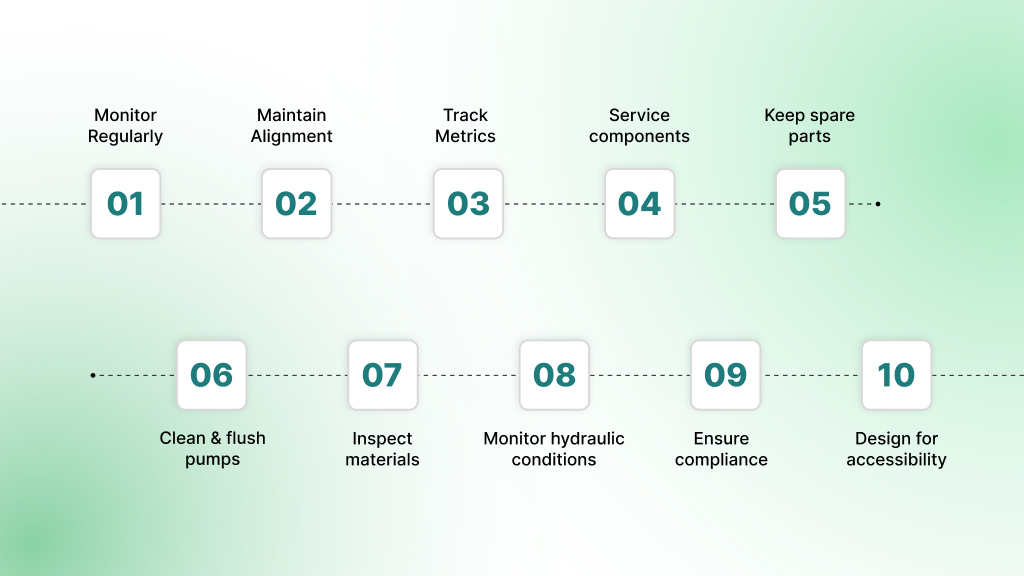
Proper upkeep is critical to keep wastewater treatment plant pumps operating reliably, avoid unexpected failures, and extend equipment life. Effective maintenance ensures smooth wastewater flow, protects against mechanical wear, and supports regulatory compliance.
To achieve these outcomes, focus on the following key maintenance practices:
- Monitor performance regularly: Check for leaks, unusual vibrations, strange noises, worn seals, and fluctuations in motor current to detect potential issues early.
- Maintain alignment and balance: Keep shafts and impellers properly aligned to reduce vibrations, prevent premature wear, and maintain energy efficiency.
- Track operational metrics: Compare flow rate, discharge pressure, and motor load against standard values to identify drops in performance, cavitation risks, or blockages caused by solids.
- Service critical components: Replace bearings, impellers, seals, gaskets, and fasteners on a regular schedule to prevent unexpected downtime.
- Keep spare parts on hand: Maintain a stock of essential components like seals, gaskets, bearings, and impellers to ensure quick replacements when needed.
- Clean and flush pumps: Remove sludge, debris, and deposits, and keep surfaces free from corrosion, dust, and moisture to maintain efficiency.
- Inspect materials: Regularly check pump casings, impellers, and coatings (stainless steel, abrasion-resistant alloys, or specialty metals) for signs of wear, corrosion, or chemical damage.
- Monitor hydraulic conditions: Track total dynamic head (TDH), NPSH, and flow performance to ensure the pump operates efficiently and safely.
- Ensure regulatory compliance: Verify that pumps meet API, ANSI, ISO, or environmental standards, and that all materials handle abrasive, hazardous, or biologically active wastewater safely.
- Design for accessibility: Use modular pump setups that allow bearings, seals, and impellers to be serviced or replaced without full disassembly, reducing maintenance time and complexity.
Struggling with wastewater treatment plant pumps selection? Explore how Chemitek’s wastewater treatment pumps, built with durable materials, precise engineering, and backed by expert support, help you keep your processes running smoothly.
Chemitek Pumps: Smart Choice for Wastewater Treatment Plants

At Chemitek, we design pumps that deliver reliable performance for wastewater treatment plants. We offer pumps built from high-quality materials like SS316, CD4MCU, and Super Duplex, with every unit designed to ANSI standards and meeting ANSI/ASME B73.1 requirements.
You can choose from centrifugal, submersible, and sludge-handling pumps that are ready to handle wastewater with high solids, abrasive particles, variable viscosity, and chemical exposure. They deliver accurate flow, stable discharge head, and dependable operation while helping you avoid clogging, cavitation, and excessive wear.
By guiding you through pump selection, system setup, installation, and routine maintenance, we help your plant run smoothly, reduce downtime, and extend pump lifespan.
Contact us today to get wastewater pump solutions built for your plant’s needs.
FAQs
1. Why is proper pump choice critical for wastewater treatment plants?
The right pump keeps wastewater flowing smoothly through every stage of treatment, from raw sewage intake to final discharge. It helps avoid clogs, reduces wear on equipment, and ensures that sludge, grit, and treated water are handled without interruptions, keeping the plant compliant and efficient.
2. Which factors should be considered when selecting a wastewater pump?
Important considerations include the type and amount of solids in the water, viscosity, density, flow requirements, discharge head, operating temperature, chemical content, and the overall system layout. Matching these parameters with pump capabilities ensures dependable performance and longer service life.
3. How do I decide between centrifugal and positive displacement pumps?
Centrifugal pumps work best for liquids with low to moderate solids and applications needing high flow rates. Positive displacement pumps are better suited for thick sludge, abrasive wastewater, or situations where a steady flow is required regardless of pressure changes.
4. Why are pump materials important in wastewater treatment?
Choosing the right materials such as SS316, CD4MCU, or Super Duplex protects pumps from corrosion, abrasion, and chemical attack. This ensures the equipment lasts longer, maintains efficiency, and reduces maintenance costs over time.
5. What problems can occur if the wrong pump is used?
An unsuitable pump can clog easily, wear out prematurely, consume more energy, or suffer from cavitation. These issues lead to higher operating costs, frequent repairs, and potential process disruptions that affect plant output and compliance.
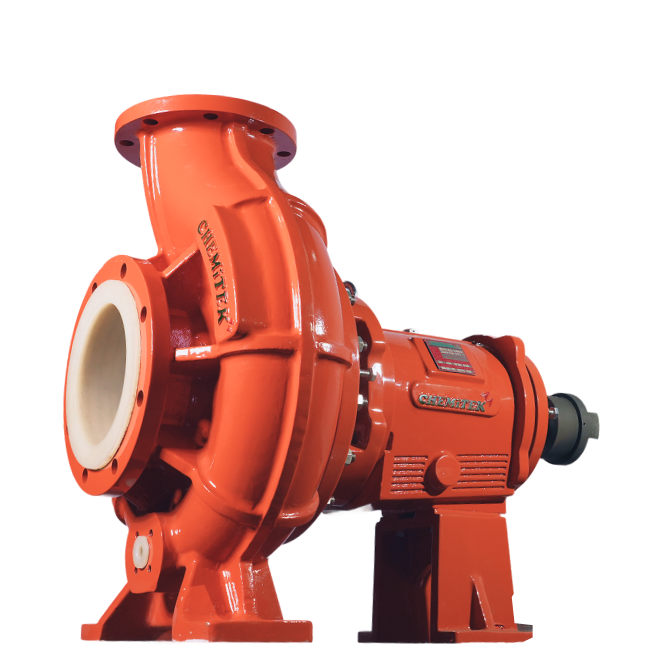
Latest posts
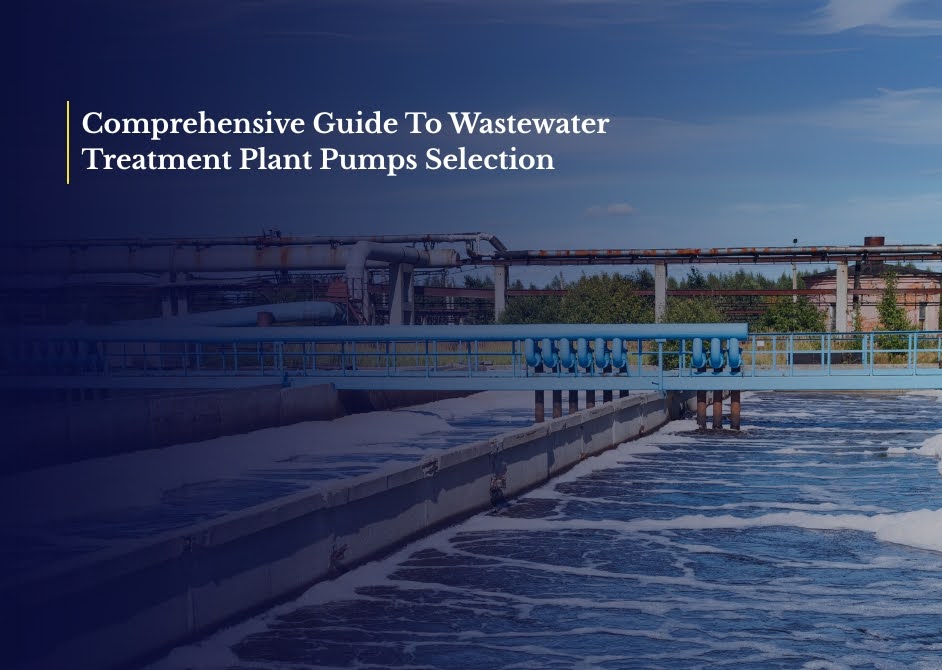
Comprehensive Guide To Wastewater Treatment Plant Pumps Selection
Ready to Upgrade Your Process Operations?